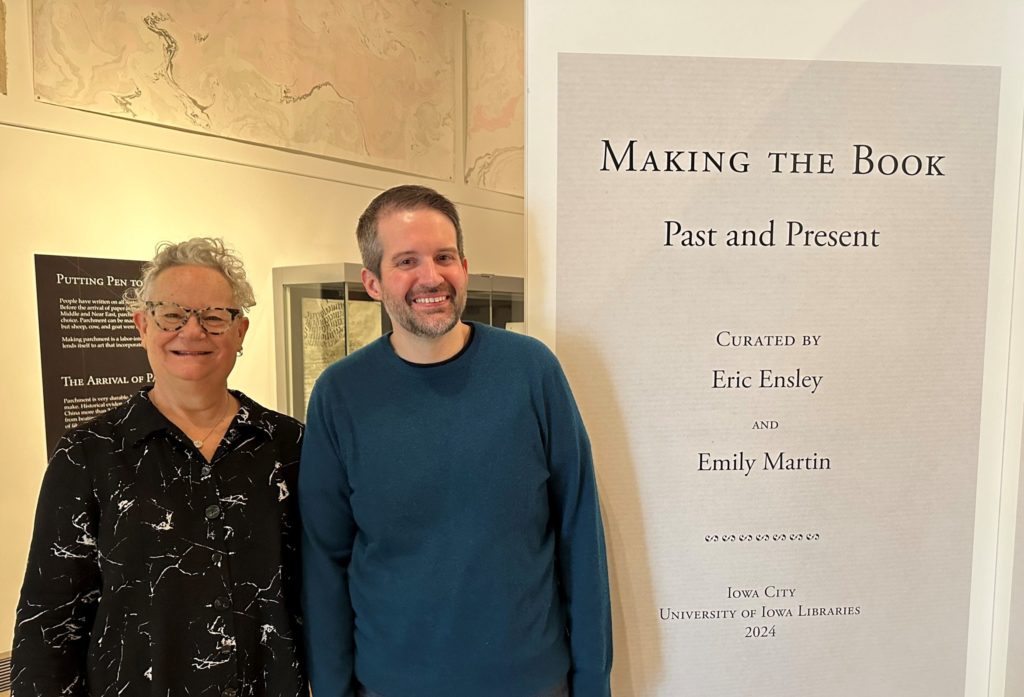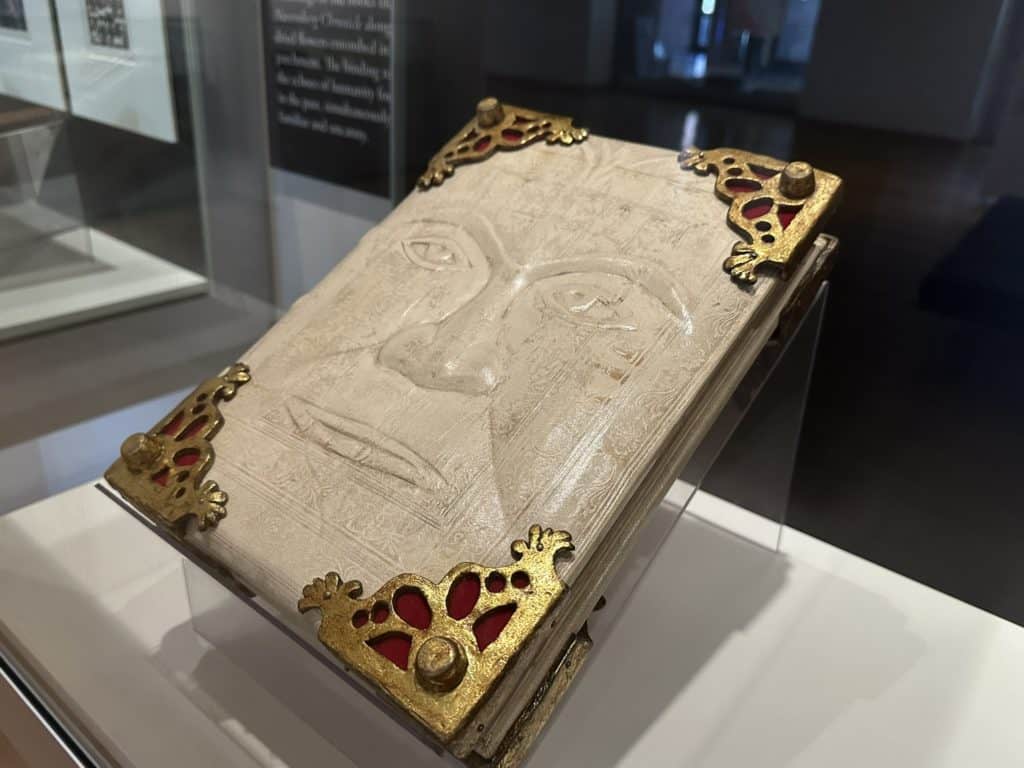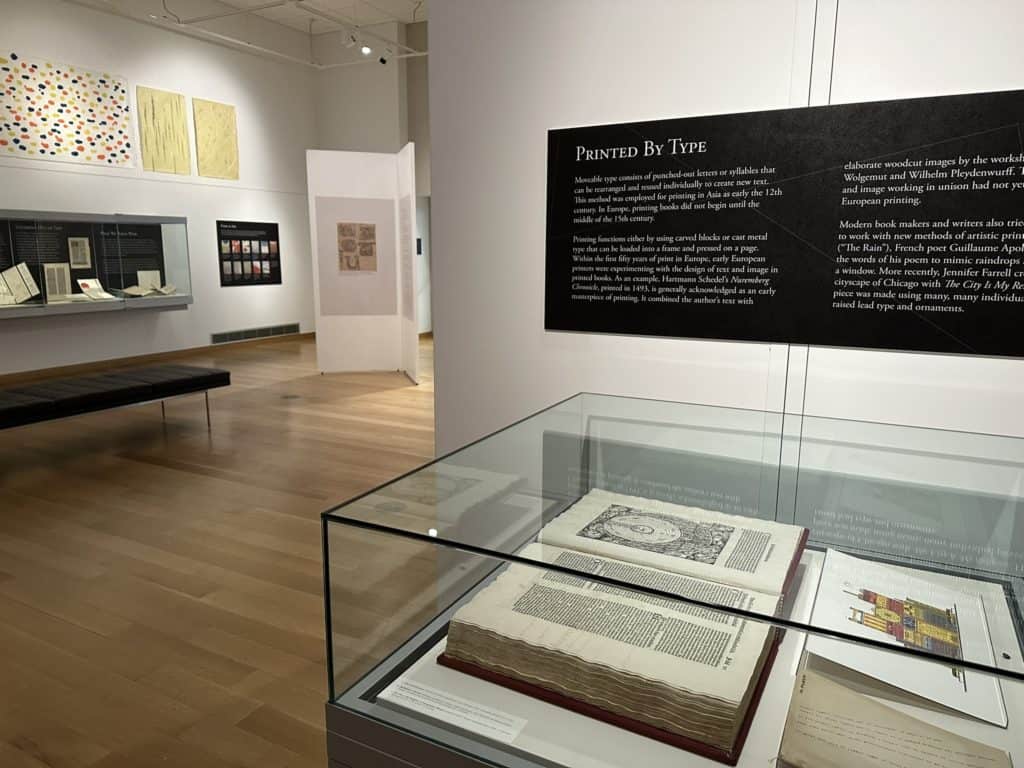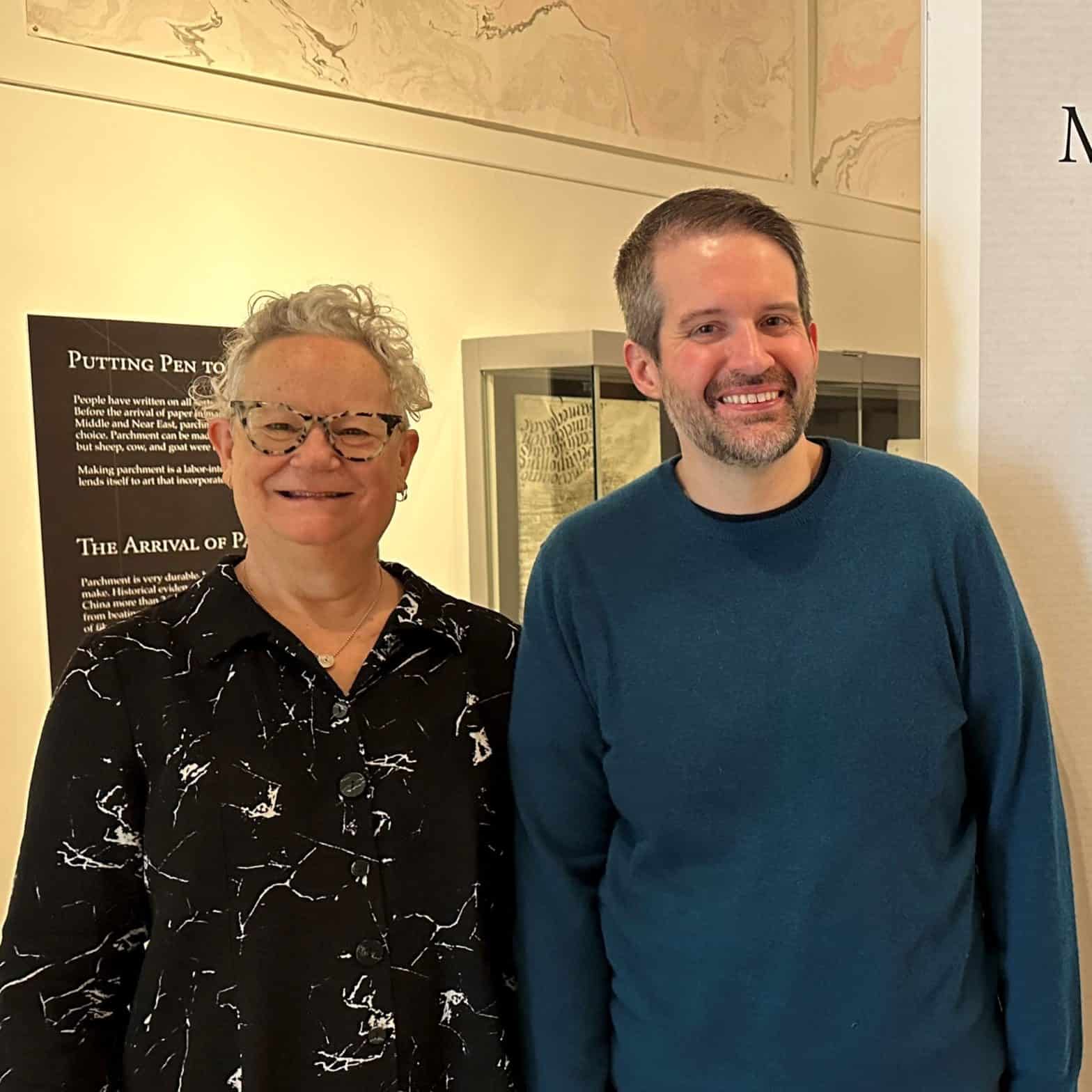by Sara J. Pinkham
Books have the extraordinary power to turn their stewards into time travelers. A roughly sewn leather cover on a medieval book or a centuries-old doodle can reveal a lot about a book’s owner and its use. Minuscule notes scribbled in the margins of a plague-year calendar can hold weightier sway over today’s post-pandemic imaginations. A delicate handwritten book of recipes for everything from medical tinctures and elixirs to inks and imitation port wine lends some insight into 19th century conventional wisdom.
Contemporary book artists often look to the past for inspiration. Historic books offer a bouquet of fonts, typesettings, bindings, paper textures, and uses for makers to explore. Ancient techniques like Coptic binding, where pages are stitched together between cover boards with the spine left open, might inspire a modern book artist to use this style. Medieval blackletter, or Gothic script, might appear on a newly hand-calligraphed work. The creative potential is infinite.
The spring 2024 Main Library Gallery exhibition Making the Book, Past and Present, takes a closer look at ways in which historic and modern books communicate across time. It explores the intersections of history, art, and practicality by placing books, materials, and makers from the Middle Ages through today in conversation with one another.

Curated by an expert medievalist and a celebrated book artist, the exhibition is a well-rounded selection of new and old books, limited editions, and one-of-a-kind objects. Co-curators Eric Ensley and Emily Martin worked together for a couple of years to decide which items to place in the exhibit and how to tell the story of history’s influence on today’s book and paper artists.
Martin is an adjunct assistant professor of bookbinding and book arts at the University of Iowa Center for the Book. Ensley is the curator of rare books and maps in Special Collections and Archives at the UI Libraries.
Ensley and Martin answered some questions about their experience curating the exhibition:
Q: What inspired you to curate an exhibition on this topic?
Martin: I liked the idea of a deeper dive into the vastness of the Special Collections holdings. I am not a librarian and do not get to explore the collections as a part of my job. I relished pairing up with Eric as my co-explorer. I research rare books and other makers’ artists books while working on my own projects, and I hope by having this exhibit I will help make the resources more visible to others.
Ensley: I don’t think I would have curated this exhibit at any other institution. It’s been eye opening to see the work of so many makers and artists alongside the vibrant scholarly community that studies book history on this campus. Both groups have quite a bit to learn from one another, and so I began to think about what sort of conversations items in our collection might have.
This exhibit is about conversations between groups, namely those who study the history of books and those who make them today. Too often these groups have been walled off from one another, but it’s a testament to our campus community that this is not true here.
Q: What are some of your favorite objects in the exhibit, and why?
Martin: I have just begun to acquaint myself with the Marvin and Ruth Sackner Archive of Concrete and Visual Poetry. Getting to see in person the pages of A Humument by Tom Phillips from that collection is fabulous. Another favorite is the Ladies Typographic Union calendar. The calendar was printed annually for 15 years by students, alumni, and faculty of the University of Iowa Center for the Book. Each calendar has a unique appearance and was created collectively by the participants.
Ensley: There are too many to point to! I’m enamored with Jan Sobota’s The Old Book, which looks like a forest spirit living in a binding in the Gallery and staring out at you. I’m very fond of the medieval psalter (Psalterium cum Antiphonis, 15th c.) on display with its modern repairs alongside expert decorative lettering. The meeting of old and new in that manuscript is fantastic. I’m also taken with the colorful modern papers hanging in the gallery made by local and international artists—they’re testament to the lasting power of this artistic form.

Photo: Sara J. Pinkham.
Q: Is there anything especially unique about the juxtapositions you have made within the exhibit?
Martin: What I particularly enjoy about the many juxtapositions we have made in the exhibit is the kind of “choose your own adventure” we’ve created by showing so many aspects of book and paper arts. Books and objects are grouped in a variety of ways, structure, materials, intent, content, function.
Ensley: I don’t believe you’re likely to see many of these juxtapositions anywhere else. Some pairings of material are jarring—for example, illustrations of dissected bodies presented in a medieval book alongside a contemporary artist’s book fits this bill. However, some early and modern books are speaking in the same vernacular. Tom Phillips’ A Humument asks us to consider how words construct humans and how they’re constantly shifting. Likewise, the early medieval devotional author Maurus Rabanus saw power in words to focus human effort on the divine—Tom and Maurus could never have a conversation in person, but I believe if they could have, it certainly would have been fascinating.
Q: What do you like about having this exhibit in the Main Library Gallery on campus?
Martin: The Main Library Gallery has great access and visibility with its location on the first floor at a main entrance. It presents itself rather than people having to know to look for it.
Ensley: The accessibility the first-floor gallery provides is wonderful. This means that this exhibit can serve so many different types of communities, from students to community members. Likewise, somewhat counterintuitively, it’s nice that this space is not necessarily just a destination space. There’s a good chance people will decide to pop into the exhibit because they saw it on their lunchbreak or while picking up some books for a class. I think the infiltration of art and history into everyday life is a big benefit of such a space.

Q: What do you hope visitors will take away from their time in the exhibit?
Martin: I hope visitors will take away an appreciation of the range and versatility of the book arts and its continued relevance in current times.
Ensley: First and foremost, I hope they enjoy the visuals of this exhibit. The colors, craft, and fine details on display are incredible and bring me joy. Then, I hope visitors will ask what books say about the long history of humanity. What do we share with the past, and what has changed? I think, with many of these pairs, there’s a sense that history is simultaneously so very close to us and far away. We care about many of the same things that ancient makers did, but it’s never quite identical from one period to the next.
Each and every one of these objects is available for use in Special Collections and Archives once the exhibition ends. There’s so much that we couldn’t quite make fit in the gallery, and I hope folks will come up to the third floor to see all the other objects we have that tell the story of humanity, too.

Visit lib.uiowa.edu/gallery for open hours and updates about free exhibit-related events. The Main Library Gallery is open daily and all are welcome. Plus, find short videos of select books in the exhibition on the UI Libraries YouTube channel.
